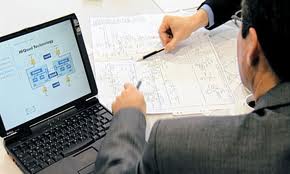 A cover letter is a professional document that is constructed in order to provide support to the resume. Usually people do not know the exact difference between a cover letter and a resume. We construct a resume and send it to all the employers for the job vacancy, but this is not the case in cover letter. A separate cover letter is prepared and sent to each employers depending upon their job requirements.
A cover letter is a professional document that is constructed in order to provide support to the resume. Usually people do not know the exact difference between a cover letter and a resume. We construct a resume and send it to all the employers for the job vacancy, but this is not the case in cover letter. A separate cover letter is prepared and sent to each employers depending upon their job requirements.How to write executive cover letters?
Below are listed some of the important cover letter tips for executive cover letter:
- Be short and precise in providing the information
- The information entered should be correct and relevant, and should match the information in the resume
- Highlight the important credential that the employer is searching for and give a professional outlook to the cover letter
- Check for the sentence construction, vocabulary, spelling, and grammatical errors in the cover letter and try to make it error free.
- Proofread the cover letter twice or thrice before sending it to the employer
- Use professional format for drafting the cover letter and keep the same format throughout the cover letter
- You may refer few executive cover letters example or executive cover sample letters. By referring such example for executive cover letters or sample resume for executive cover letters you can understand the format of cover letters.
An executive cover letter follows a certain professional format. It is basically divided into 3 paragraphs:
- Introductory paragraph: This includes the aim of drafting the cover letter i.e. the position you are applying for. Do remember to mention the reference i.e. the source from where you found out about the job opening or through whom you are applying for this position. Include the professional experience along with the roles and responsibility that you undertook. Mention the past experiences too, as it has acts as an added advantage to your profile. Also provide a short summary of the projects that you completed.
- Middle paragraph: This is the informatory section that involves your educational qualification, contact details, skill set and core competencies, project details (internship and in-house project), achievements and extra-curricular activities. Remember to mention the email-id and telephone number, so that the recruiter can contact you for further details.
- Concluding paragraph: This is the last and concluding section of the cover letter where you provide salutation to the recruiter for their precious time and consideration in going through your cover letter. You can use 'sincerely', 'dear', 'regards' for salutation, followed by the signature and you full name. Do remember to enclose the required documents with the cover letter such as your resume and other documents as per the employers demand. Also, try to persuade the recruiter to schedule an interview with them according to the availability, show your eagerness in joining the organization and being a part of its growth and success.
The executive cover letters should be constructed in a unique style so that the employers may be impressed by its first look. You can also refer to executive cover letter examples for drafting a well-professional and attractive cover letter. Refer to the above tips for drafting the cover letter and make sure that it suits the related profile.




